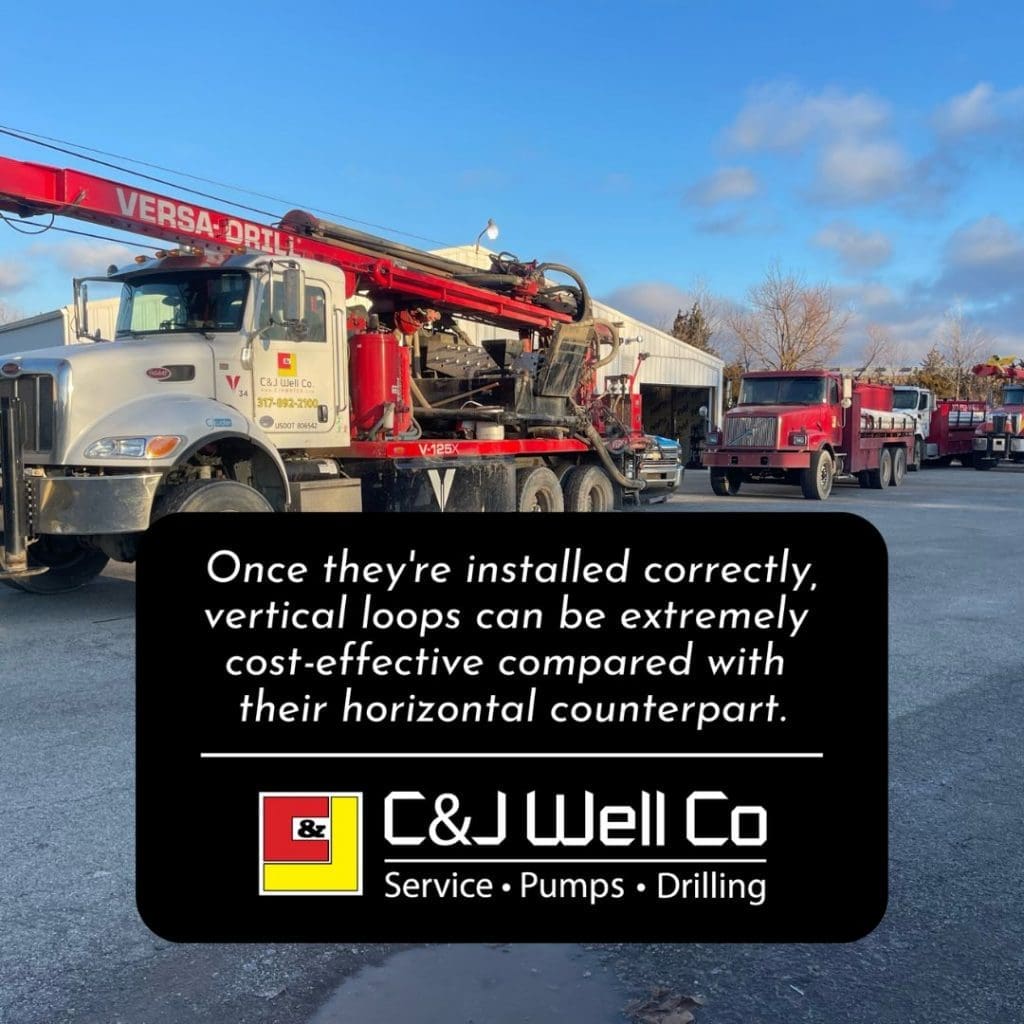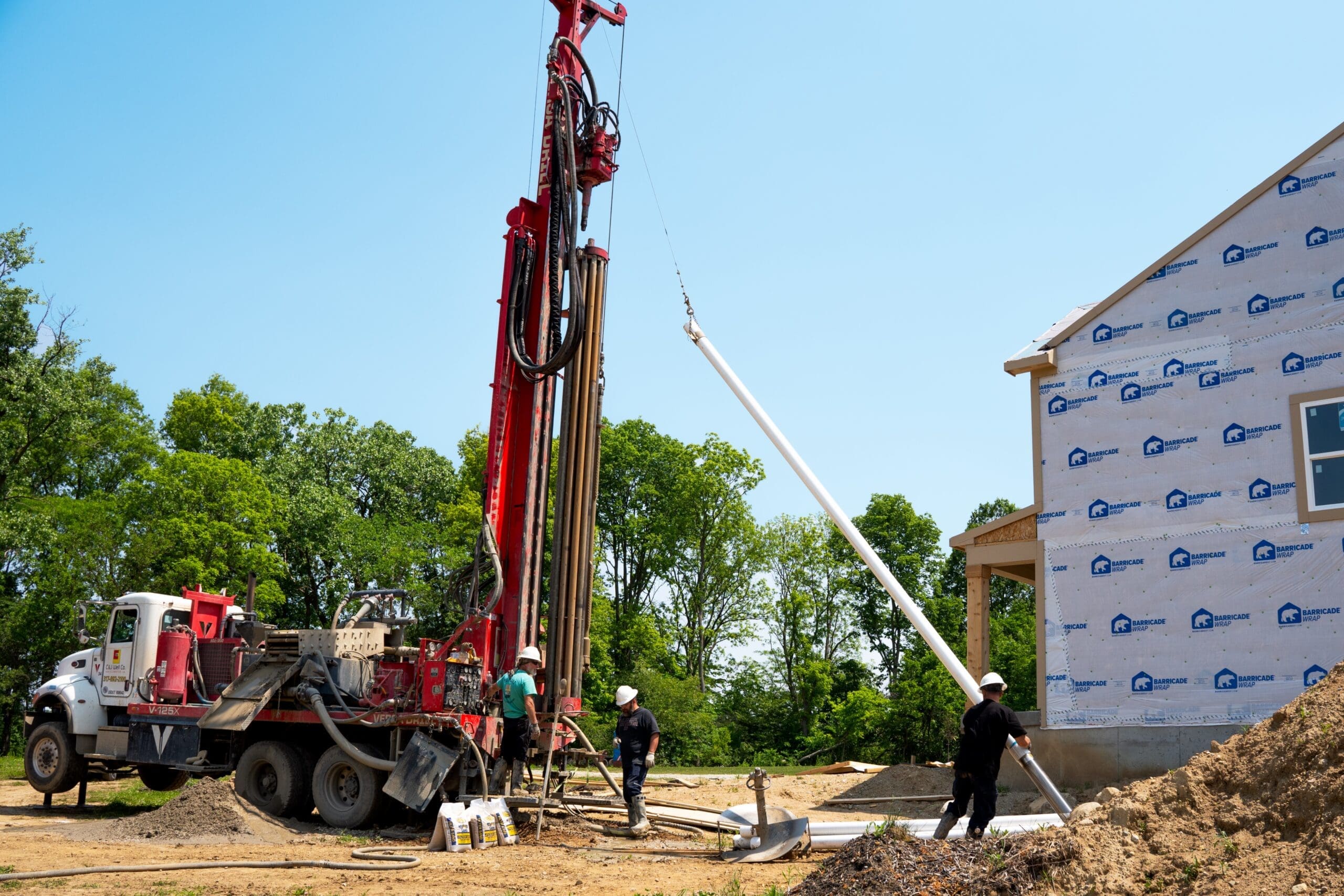If you’ve been interested in getting a geothermal heating and cooling system, but the price or size needed to install one has hindered you, then we have some information for you. Geothermal wells extract the heat energy that exists in rocks deep beneath the earth’s surface. The two main types of geothermal well drilling systems are vertical loop and horizontal loop systems. Vertical loops consist of a single pipe that extends down into the earth’s crust. In contrast, horizontal loops consist of multiple lines arranged in parallel rows underground with one end exposed above ground.
Well Drilling Systems
The two types of geothermal drilling systems are vertical loops and horizontal loops. Both types of drilling systems can be used to drill geothermal wells and water wells.
- Vertical-loop geothermal wells are drilled straight down into the ground.
- Horizontal-loop geothermal wells are drilled into the ground at an angle and then run horizontally for several feet before being re-drilled vertically.
The primary difference between these two systems is in their cost. Vertical geothermal wells are cheaper to install because they only require one set of equipment (a pipe casing). Conversely, horizontal loop geothermal wells need additional equipment (a second pipe casing) to distribute heat evenly through your home or business.
Horizontal Geothermal Loops
Horizontal geothermal loops are buried in the ground and look like long, narrow trenches. They offer several advantages over vertical systems, including:
- A greater volume of water can be harvested from a given area since it is spread horizontally instead of vertically.
- Less power is required to run the pump because there is lower resistance to the liquid as it passes through your system than if all of your pipes were vertical.
Vertical Geothermal Loops
While it may be true that geothermal systems have a higher upfront cost than traditional HVAC heating and cooling systems, once they’re installed correctly, vertical loops can be extremely cost-effective compared with their horizontal counterpart.

Until the end of 2022, you can get 26% of the amount you spent on purchasing and installing a geothermal heat pump system back in federal income taxes. This amount changes to 22% once 2023 rolls around, so keep that in mind. Also, Your state may offer you a rebate on purchasing and installing a geothermal heat pump system. In Indiana, for example, there is currently a fund of $500,000 that you can apply for. The amount of money you receive will range depending on the size of the system itself, but you could receive up to a maximum of $2,000.
Geothermal systems come in various fashions, but if the size is a concern, this is where vertical geothermal systems come into play. As the name suggests, this installation style has the piping installed vertically rather than horizontally. The number of pipes you need will vary depending on the heating and cooling requirements of your home, but with there only needing to be 10-20 ft between each pipe and 100-400 ft of depth for each, it’s certainly an option to consider if the size was a worry point.
No need to worry about your properties’ limited space or hard-to-access areas either—drill rigs such as our new Versa Drill V-12 are the perfect tool for any tight geothermal installation. The V-12 drilling rig is the most compact rig in the Versa-Drill fleet, and we can easily navigate the tightest, muddiest job sites to get in and out fast.
Vertical loop systems have several other benefits as well: these wells have a high thermal capacity which means they can provide both heating and cooling; they’re also better at delivering consistent temperatures; while horizontal loops may require electricity pumps or compressors—vertical ones don’t need any additional energy sources besides what’s already being used inside your house!
Should you choose vertical or horizontal geothermal loops?
For heating and cooling, vertical loops are more efficient than horizontal, and this is because the energy from a vertical loop can be used to produce both heating and cooling. Vertical loops also use less space than their horizontal counterparts.
Vertical geothermal wells are used for direct-use systems, which consist of a single borehole or one well drilled into the ground where the water comes out cold and hot water is circulated through pipes in either direction through the ground to provide heat or air conditioning. Both types of geothermal wells are used to drill into the ground and install a heat exchange loop. But there are some key differences that you should be aware of before making your drilling decision. If any of this information has made you more curious about having your vertical geothermal heating and cooling system installed, then make sure to call us at 317-852-WELL or visit our website at cj4water.com/geothermal for more information.









